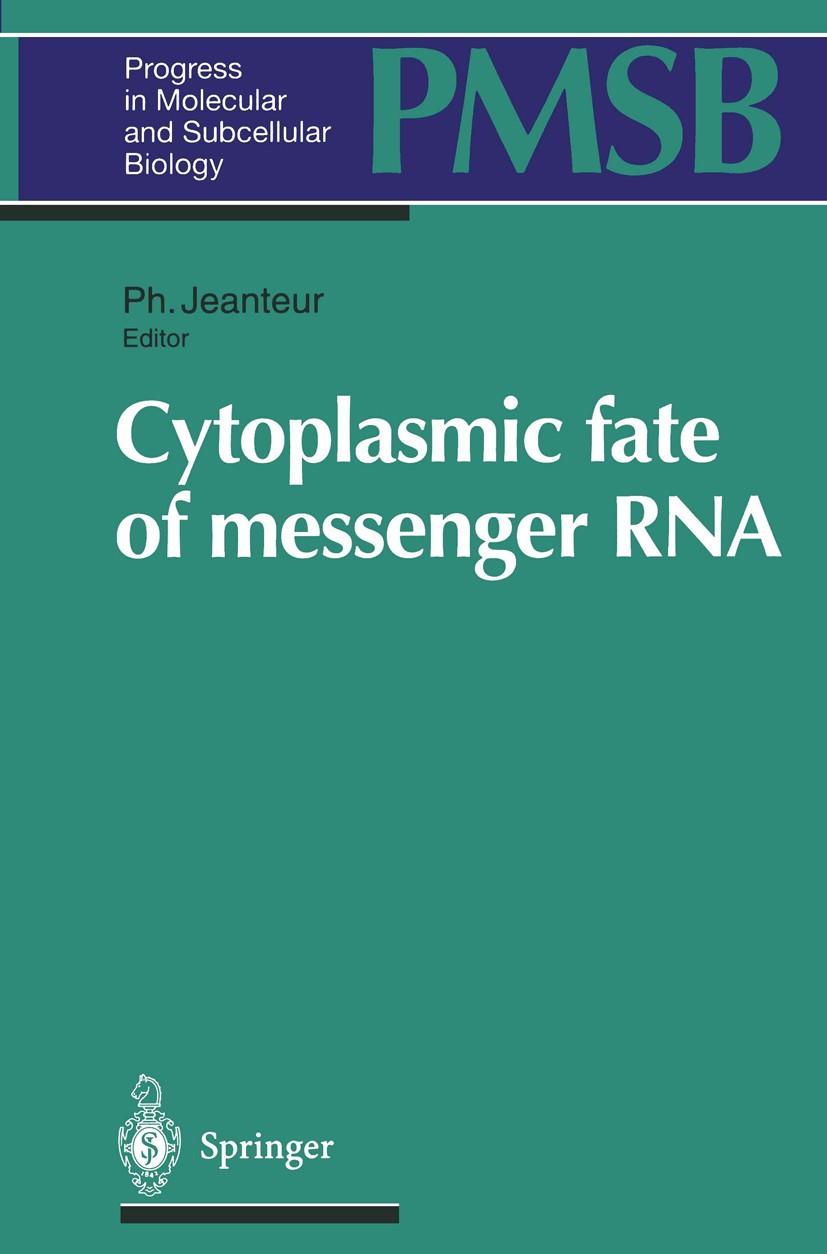| 书目名称 | Cytoplasmic fate of messenger RNA |
| 编辑 | Philippe Jeanteur |
| 视频video | http://file.papertrans.cn/243/242675/242675.mp4 |
| 丛书名称 | Progress in Molecular and Subcellular Biology |
| 图书封面 |  |
| 描述 | Among all cellular RNA species of the three main types, ribosomal RNA, transfer RNA or messenger RNA, be they from prokaryotic or eukaryotic organisms, the prokaryotic mRNA is unique in that it has no precursor and is synthesized in the same mature form as it is translated into proteins. In fact, ribosomes join the nascent mRNA chain and engage in protein synthesis long before its transcription is complete. Provisions are even made for slowing down the ribo somes at some sites to prevent them from catching up with the RNA-polymerase. Of course, such a situation is only possible in the prokaryotic world where there is no such thing as a nuclear mem brane physically secluding the transcription process from the cy toplasm where translation is restricted. Quite in the opposite extreme, the eukaryotic pre-messenger RNA has to suffer many and sometimes drastic steps of maturation (capping, polyadenylation, splicing, edition) before the decision is made to export it to the cytoplasm. That is where it enters the scope of this book. Once in the cytoplasm, many options are still open to it: its entrance into polysomes may be delayed (as it is in unfertilized eggs) or merely prohibited (fe |
| 出版日期 | Book 1997 |
| 关键词 | Chloroplast; Nucleotide; RNA; biochemistry; biology; cell; cell biology; gene; gene expression; molecular bio |
| 版次 | 1 |
| doi | https://doi.org/10.1007/978-3-642-60471-3 |
| isbn_softcover | 978-3-642-64420-7 |
| isbn_ebook | 978-3-642-60471-3Series ISSN 0079-6484 Series E-ISSN 2197-8484 |
| issn_series | 0079-6484 |
| copyright | Springer-Verlag Berlin Heidelberg 1997 |
 |Archiver|手机版|小黑屋|
派博传思国际
( 京公网安备110108008328)
GMT+8, 2025-11-14 08:54
|Archiver|手机版|小黑屋|
派博传思国际
( 京公网安备110108008328)
GMT+8, 2025-11-14 08:54


